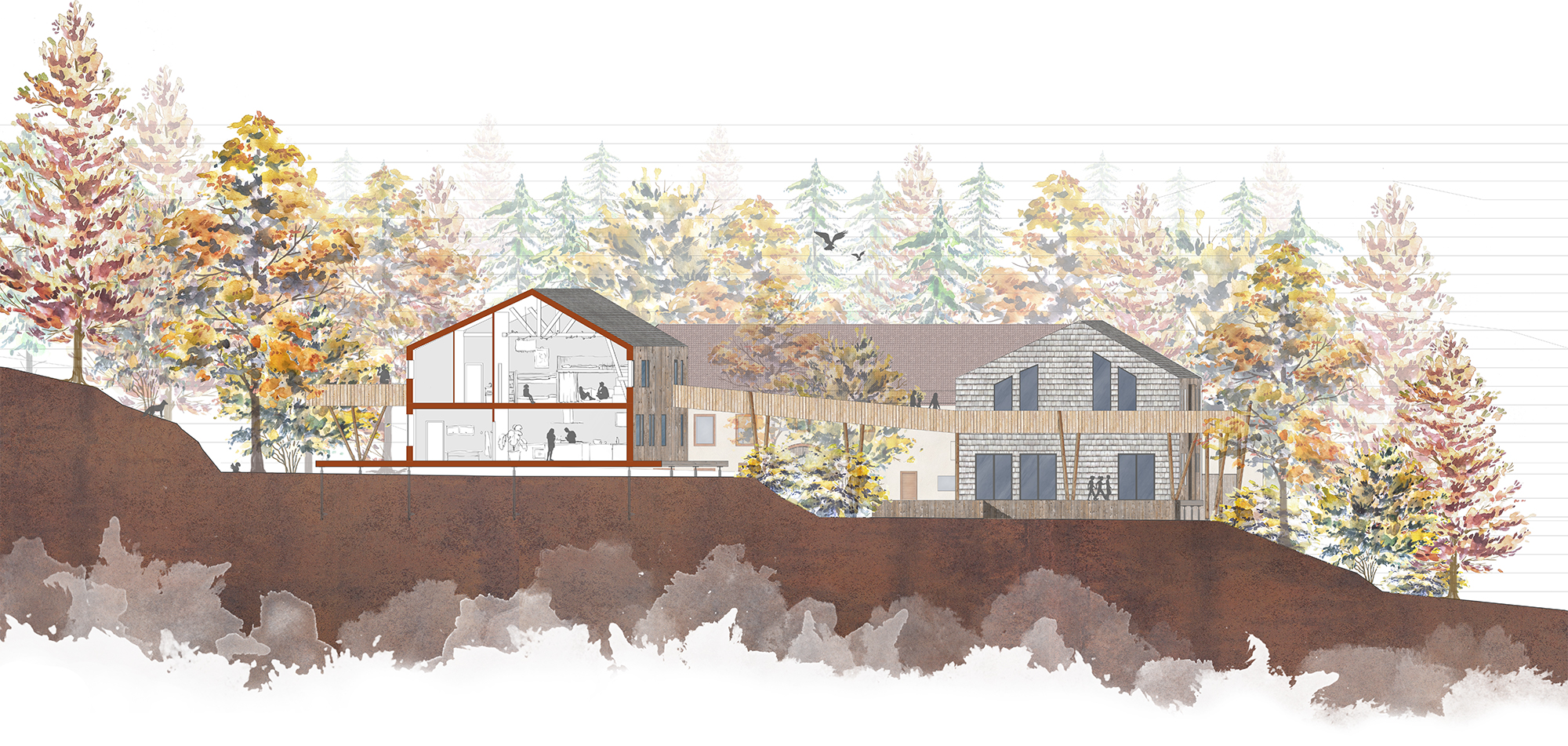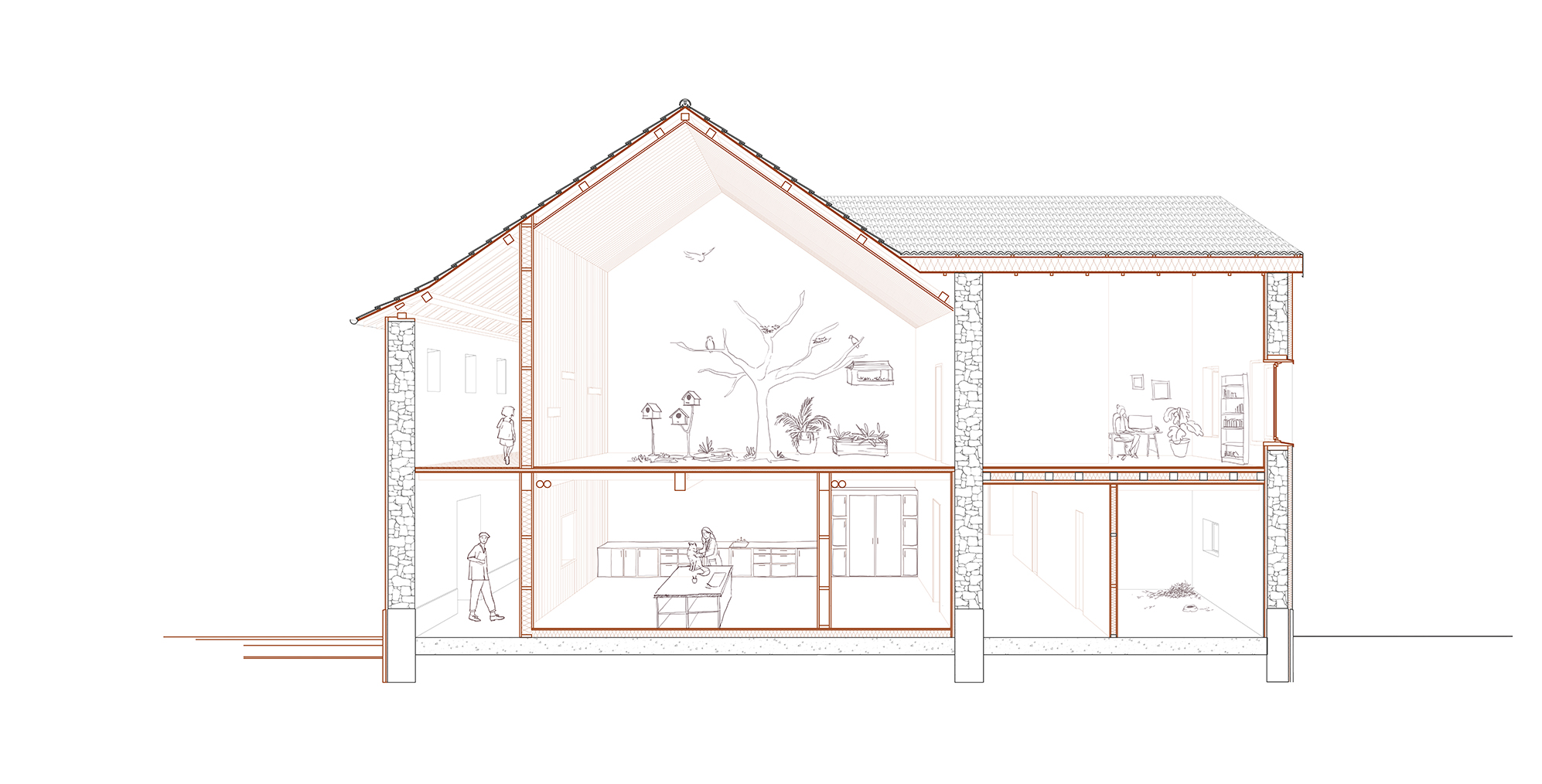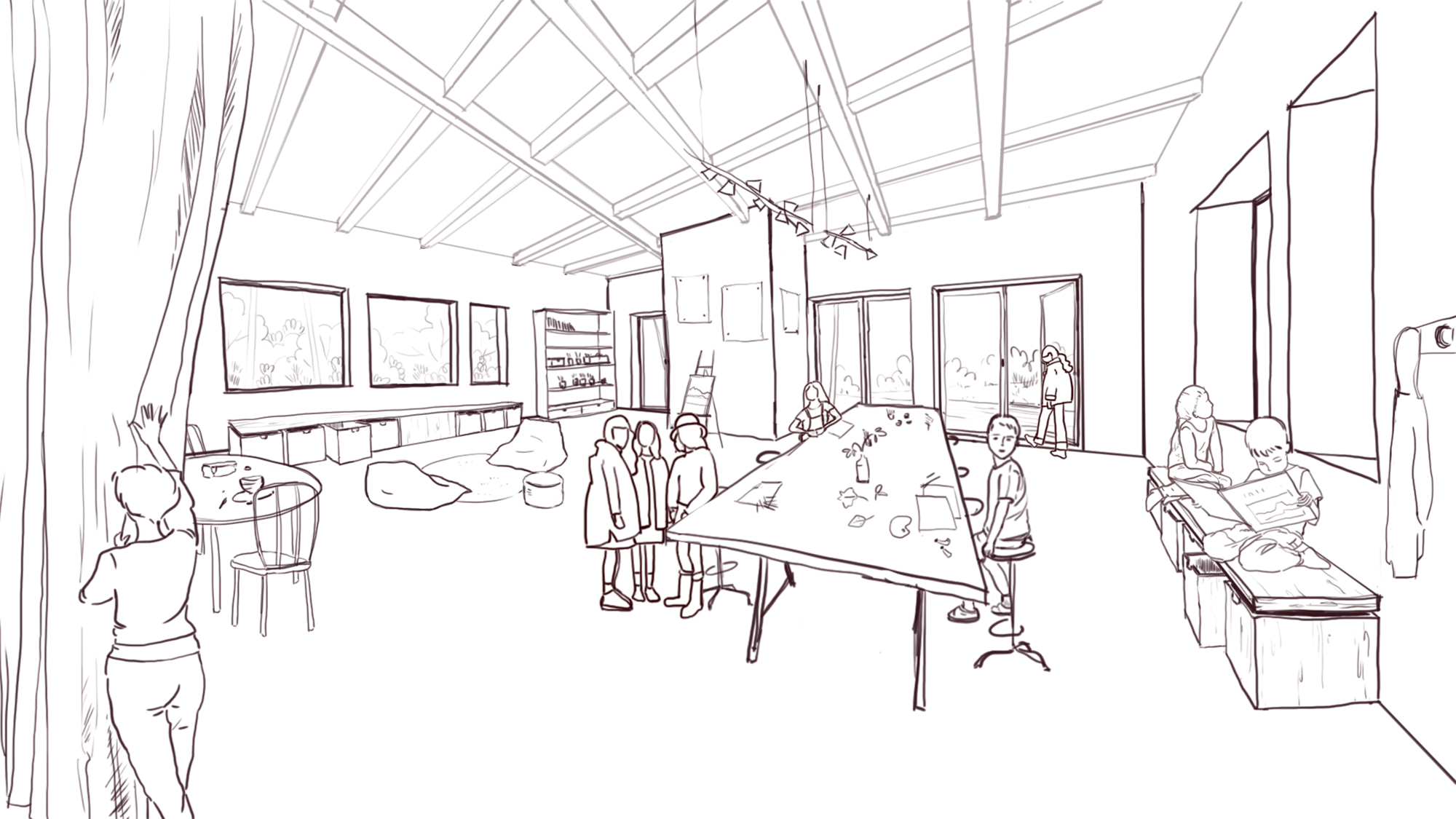Johanna RODRIGUES
Centre de la Biodiversité à Saint-Dié-des-Vosges.
Ce projet de fin d’étude porte sur la métamorphose d’un site où est implantée une ferme typique vosgienne laissée à l’abandon en banlieue proche de Saint-Dié-des-Vosges. Ce site un peu particulier devient support pour un centre de la biodiversité comprenant une partie pédagogique à l’image d’une maison de la nature et d’un centre de soin à la faune sauvage.
La question qui se pose est : comment réinvestir un lieu et son patrimoine bâti avec les enjeux de protection de la biodiversité contemporains ? En effet, entre 1970 et 2018, on observe que certaines populations animales ont diminué d’en moyenne 69%. Vertébrés, oiseaux, poissons, mammifères, amphibiens, reptiles et de nombreux insectes sont concernés. On parle de 6ème extinction de masse qui menace 1 million d’espèces de disparition d’ici 2030. Les écosystèmes dont ils sont acteurs sont et seront impactés. Écosystèmes dont l’Homme fait partie et dépend également.
La forêt s’est ré-appropriée ce lieu abandonné par l’humain, mettant en place un écosystème forestier autonome. La question de l’implantation sur ce territoire est un enjeu majeur du projet. Celà implique des questions autour de la relations du bâti avec le sol, des aménagements extérieurs, son fonctionnement et questionne également les techniques constructives. Les énergies, la gestion des déchets, la récupération et le traitement des eaux, la nature et la provenance des matériaux sont des points clés liés aux activités humaines qui doivent être réfléchis. Le tout dans le but d’être en accord et s’intégrer au mieux à cet écosystème.
L’enjeu patrimonial est un point important du projet. Le corps de ferme comporte les caractéristiques d’une ferme typique vosgienne : un bâtiment scindé en trois volumes ; un premier destiné à l’habitation, un second au stockage et une étable destiné aux animaux. Il est apparu vers la fin du XIXème siècle, a été agrandie et a échappé à la destruction de la ville à la fin de la seconde guerre mondiale. Sa préservation relève d’un enjeu mémoriel mais également d’un enjeu vis-à-vis du programme. En effet, le bâtiment, ayant abrité des animaux de ferme, puis des chevaux suite à une reconversion en centre équestre (jusqu’à sa fermeture au début des années 2000), a un lien fort avec le programme et notamment le centre d’accueil et de soin à la faune sauvage. Alors que le corps de ferme est symbole d’une Nature au service de l’Homme, qui a abrité des animaux domestiqués que l’on nourrit et protège pour notre intérêt, il est question de retourner cette vision. De mettre cette fois-ci, l’Homme au service de l’Animal et de sensibiliser et d’éduquer autour de l’importance et de l’urgence lié à la disparition de la biodiversité.








